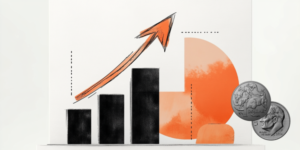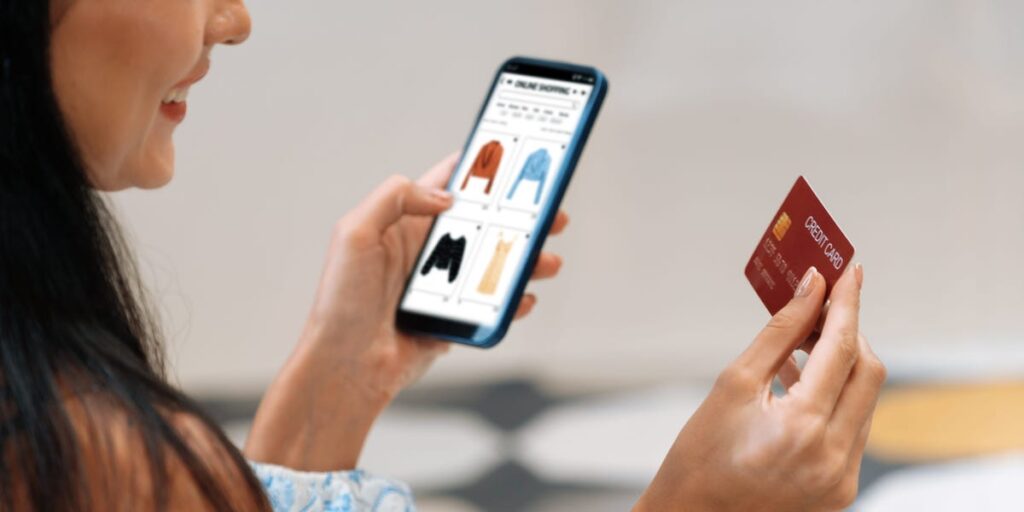- Gen Z’s spending preferences are changing as they face high prices and increasing credit card debt.
- BNPL services offer financing options, but Gen Z is looking to make better money decisions.
- Klarna said that 18- to 25-year-olds are one of its smallest demographics.
When it was time for 27-year-old Zachary Timms to propose to his girlfriend, he used Affirm for the first time to pay for her dream ring.
Timms told Business Insider that he doesn’t usually use Buy Now Pay Later services, but the convenience of paying off a $7,000 engagement ring led him to try it. As an elder Gen Zer, his spending choices fit in with a trend BNPL companies and retail experts have observed in young adults.
“I try to buy everything out of pocket if I can,” Timms said.
His reason? To avoid piling up debt and set himself up for future milestones, like buying a home.
Although Timms’ girlfriend said yes, Timms told BI that he would say no to using a BNPL service again — unless he was “in a pinch.”
BNPL seemed to be growing in popularity with Gen Z in 2022, with its low fees and fast credit approval. It has been criticized, however, with consumers previously telling BI that it can encourage impulsive purchases and lead to racking up debt.
BNPL offers people the option to pay for items like apparel, tech, and plane tickets in installments instead of paying full price all at once. The difference between BNPL and credit cards is that the full price of an order is calculated and split into a short-term financing schedule at the checkout at firms like Afterpay and Klarna.
A recent survey by the University of California’s Center for Public Relations and creative communications agency Day One Agency seemed to show Gen Z aren’t as enamored with services like BNPL as many might expect, even as companies expand their offerings on sites like Target and Sephora.
USC and D1A asked 1,022 18- to 25-year-olds across the US if they’d rather pay for something outright or in installments; only 14% said they’d opt to pay in installments.
The majority, 59%, chose to pay for goods upfront and 27% of respondents fell somewhere in the middle.
If Gen Zers like Timms are trying to avoid paying in installments, there are a number of factors that could contribute to that choice, Courtney Alev, consumer financial advocate at Credit Karma, said.
They want to make better financial decisions
Gen Z is racking up credit card debt with the rising cost of living.
According to a Credit Karma survey last year, 86% of Gen Zers surveyed “left 2024 with financial regrets, their most prolific regret being overspending,” Alev said.
One 25-year-old Tiktoker said that services like Klarna and Afterpay have become “so normalized,” particularly for people in their early 20s. She said BNPL should reserved for “essential” items.
“If I don’t have $80 to pay up in full, then maybe I just don’t need it,” said the creator, who goes by the username Sparklyclever.
Some, like Timms, worry about their finances being affected by owing a BNPL service. However, there’s no guarantee that owing money to a company like Affirm or Klarna would impact a credit score.
A recent study by FICO in partnership with Affirm found that including BNPL services on consumers’ credit reports led to higher scores or no change for the majority of over 500,000 borrowers — despite Gen Z’s growing concerns about their financial standing.
They prefer to use credit cards
Gen Z may be acquiring debt at a faster rate than millennials, but Alev said credit cards are “more advantageous” than BNPL for borrowing, with rewards points that can be redeemed for travel, for example.
In the Credit Karma survey, 15% of Gen Z consumers said they planned to use BNPL for holiday costs, while 28% said they’d use their credit cards.
“Gen Z is pretty savvy when it comes to credit cards and have figured out the power of rewards,” Alev said.
Gen Z isn’t always BNPL’s typical consumer
At Klarna, adults between the ages of 18 and 25 make up 13.7% of its shoppers, making it the second-smallest group of users (the smallest is adults 56 and up, which Klarna says is part of its fastest-growing segment). The average age of its users is 36.
Affirm COO Michael Linford says that its users “skew a little bit older” than Klarna and Afterpay. Linford attributes the difference to Affirm’s focus on higher-value shopping carts and underwriting expensive items for credit-worthy customers.
A college student, Linford said, likely wouldn’t have the income to cover the cost of a $500 barbecue grill compared to someone with an established career.
They still want to have fun
Key financial milestones, like buying a home or retirement, are also “less top of mind in general for this generation,” Alev said.
Gen Z consumers typically place less importance on saving money than older generations, prioritizing near-term fun, she said.
The “simplicity that comes with paying in full” can let Gen Zers off the hook for multiple payments on varying due dates. Their view of paying with cash is also a factor.
Shadé Smith, 25, told BI that she’d rather pay her full balance to “get it out of the way.” Smith said she used BNPL once or twice in 2024 on a TV or a concert ticket.
“It’s easier to get the buyer’s remorse over with up front instead of being reminded of my impulse purchase every two weeks,” she said.
About one in five Gen Z consumers told Credit Karma that “paying with cash feels like free money.” Money that they can spend on travel, entertainment, and self-care products, as data from Sezzle and Shopify suggests they tend to purchase.
Blame it, at least in part, on their “YOLO mindset,” Alev told BI.
Read the full article here
















